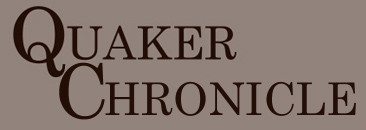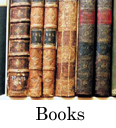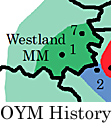Horton Howard was a medical doctor, surveyor, and early Quaker leader in the state of Ohio. He served as the first men's Clerk of Concord MM and Ohio Yearly Meeting.
Early Years
Horton Howard was born in Carteret County, North Carolina, the son of Bartholomew & Ruth Howard. John W. Fyfe reports that Howard's parents were wealthy slave owners, but gives no citation for this information. In early life, Howard was formally trained as a medical doctor, but near the end of his training he felt that he should not practice formally. Throughout the remainder of his life, others came to him for medical attention. Howard married (1) Anna Mace at Clubfoot Creek FMH in 1791; she died around 1796.
Quaker Settlement in Ohio
In 1799, Howard was one of three Friends appointed to investigate the possibility of Friends of Trent and Core Sound Monthly Meetings moving as a body into the Northwest Territory, where slavery was forbidden. The three men reported back favorably, and Howard moved ahead of the main body of Friends. Before the bulk of NC Friends arrived, Howard was appointed to transcribe the extracts of the Baltimore Yearly Meeting so that every monthly meeting in Redstone QM would have a copy.
Once the North Carolina Friends arrived in southwestern Pennsylvania, they were not ready to move across the Ohio River because they were unable to obtain deeds to property there. The territorial legislature appointed future president William Henry Harrison to serve as the first delegate from Ohio to Congress. Harrison only served for four months, but during this brief time he convinced Congress to pass a land act opening thousands of acres in eastern Ohio to settlement. A land office was authorized in Steubenville.
Horton Howard became one of the employees in the land office. In this role, he assisted thousands of people to find suitable property in the "Seven Ranges" and additional lands as they were opened for settlement.
Howard played a key role in the developing Quaker organization in Ohio. He was appointed the first men's Clerk of Concord (Ohio) MM when it was opened in 1801 as the first Monthly Meeting of Friends in the Northwest Territory. He later served as the first Clerk of the men's Ohio Yearly Meeting.
In 1806, Redstone QM, which stretched from current Dayton, Ohio, to Pittsburgh, asked to be subdivided. Baltimore Yearly Meeting appointed a committee to visit Redstone QM and its constituent meetings. A map produced that year showed all Friends meetings of Redstone QM except a few near the border of Indiana. This map is thought to have been the work of Howard, as he signed later and very similar maps. The map was used to carve Redstone QM into three smaller QMs: Redstone, Short Creek, and Salem QMs.
Howard was recorded as a minister while living in Ohio and travelled among most Ohio meetings. He served as Assistant Clerk of the men's Ohio YM while Elisha Bates was Clerk and disagreed with the way that Bates dealt with Elias Hicks during Hicks's first visit to Ohio.
Rouse Taylor described HH in an account of a journey from Newport RI to Smithfield OH in 1811: "Horton Howard came to see us [at the house of William Millhouse] in the evening, gave us considerable information respecting the country, especially the Miami, which he had lately visited. I do not know who to compare Horton [Howard] to; he is 42 or 43 years old; his voice rather thin; his stature below the middle size; has a strong, comprehensive, improved mind; a generous heart, and agreeable manners, especially at home... is a public Friend in esteem." (Bulletin of the Friends Historical Society, vol. 9, No. 1, Fifth Month 1919, pp. 21-22.)
Later Years
When the new land office was opened in central Ohio, Howard went to work there and moved his membership to Alum Creek QM.
In the 1820s, during an epidemic in which one of his daughters died, someone began to use herbal remedies to treat patients. Howard ridiculed the practice at first. However, as the patients began to improve, Howard revived his latent medical practice. Howard was shocked by the success of the treatment and began to travel among Ohio Indians and collect information on their medical practices. This information was collected after his death and printed. Included in the book are cuts of various herbs and plants used by the Indians.
Howard died in Columbus, Ohio, on 8/14/1833. The New Hampshire Patriot (a newspaper) reported on Ninth Month 16, 1833, that Howard, his wife, daughter, and two grandchildren died within days of each other during a major cholera outbreak in Columbus.
Sources: EAQG 1: 271-272; 4:40, 150, 338, 1166 |






